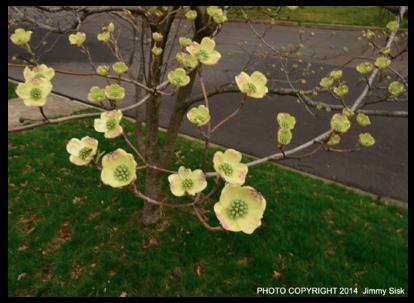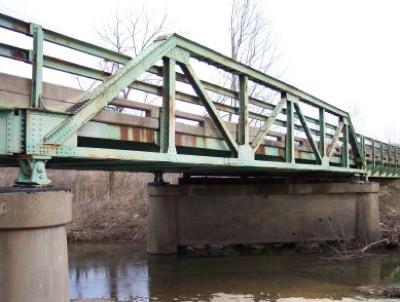
Dee Loflin, SMT Manager/Editor
Nick Kuhn, forestry field programs supervisor for the Missouri Department of Conservation, says extremely cold weather can actually cause flowering trees to blossom earlier than they might under more normal conditions.
“Nothing about this year’s weather has been normal so far,” says Kuhn, “but if things take a turn toward more average spring weather, we could start seeing redbud blossoms very soon, and dogwoods not far behind.”
Serviceberry and redbuds typically start blooming in late March. Dogwood flowers typically open in mid-April, though the actual date in any given year can vary by as much as three weeks. Kuhn says he would not be surprised to see dogwoods blooming in early April this year … if the weather remains average or warmer.
“The timing of tree flowering and green-up is affected to some degree by day length,” says Kuhn, “similar to the behavior of many animals. But weather plays a pivotal role, too. Assuming there is no late cold snap, the rapid shift from late extreme cold to unseasonably warm weather is likely to speed up flowering and associated changes in all trees, not just dogwoods and redbuds.”
Kuhn says tree buds and new growth also take on visible colors in the spring. New twigs are not always green. They can be red or orange, depending on species. Swelling buds can also turn attractive reds, oranges, and yellows, adding subtle dimensions to spring colors.
Trees in urban settings normally bloom earlier than those in the wild, due to heat retention by asphalt and concrete. The following routes provide good viewing for those who want to see wild trees in bloom.
Highway 19 between Montgomery City and Thayer
Highway 5 between Versailles and Gainesville
Highway 142 between Doniphan and Bakersfield
Highway 72 between Cape Girardeau and Rolla
Highway 63 between Columbia and Thayer
I-44 between Eureka and Rolla
Highway 50 between Eureka and Jefferson City
Highway 60 between Poplar Bluff and Springfield
For more information about Missouri’s native, spring-flowering trees, such as flowering dogwood, visit mdc.mo.gov/node/989.
Kuhn says accelerated blooming schedules also could shorten the time when spring breezes are laden with tree pollen – great news for allergy sufferers.
According to Kuhn, trees across much of Missouri are well on their way to recovering from the extremely stressful drought and heat of 2012. Missouri received more rain last year, and the summer was not nearly as hot as in 2012.
“If this year’s summer weather is bad I would still only be somewhat concerned for tree health,” he says. “If this year is not bad or even if it goes bad in mid-August or later, trees that went into the summer healthy would get along pretty well.”
He went on to say that landscape trees in parts of the state that experienced drought in both 2012 and 2013 will need supplemental watering well into the summer months to regain their vigor.
“If they made it this long they must be tough, so give them water and mulch, but do not fertilize other than low rate slow-release fertilizer this spring.”
Kuhn cautioned that high-nitrogen fertilizer, which typically is used on lawns, can cause excessively fast growth in trees. This rapid growth often can’t be sustained in hot, dry weather, causing the trees to look poor later in the summer. Regular watering – deep soaking every two weeks – can prevent this.
For more information about caring for trees, visit mdc.mo.gov.
Photograph courtesy of photographer Jimmy Sisk. Photo taken in Charleston, Missouri prior to the Charleston Dogwood Azalea Festival.

Submitted by
Dee Loflin, SMT Manager/Editor
United States - No enthusiastic sky-watcher misses a total eclipse of the moon, and if weather permits, neither should you!
If it’s cloudy in your part of the world, then you can also watch the eclipse live on Space.com, courtesy of NASA, the Slooh community telescope and the Virtual Telescope Project.
The spectacle is often more beautiful and interesting than one would think. During the time that the moon is entering into and later emerging from out of the Earth's shadow, secondary phenomena may be overlooked.
This first total lunar eclipse of 2014 is set to begin tonight (April 14) into the wee hours of Tuesday morning (April 15). The lunar eclipse is set to begin at about 2 a.m. EDT (0600 GMT), and it should last about 3.5 hours. The eclipse should be visible, weather permitting, through most of North America and part of South America.

Written by
Beth Farrah, SMT Writer
Dexter, Missouri - Bud Shell Ford will be holding a Drive 4 UR School program at the Bearcat Event Center this Saturday, April 12th starting at 10am. All you have to do is test drive a new Ford vehicle and you will earn $20 for Dexter’s Junior High Beta Club! Help the club max out at $6,000. The test driving vehicles include: New Ford F150, Cmax, Edge, Explorer, Focus, Fusion, Escape, Taurus or Fiesta! The event is rain or shine, so make sure to come out and support the Junior Beta Bearcats!
Ford’s Drive 4 UR School was founded in 2007 and has been helping schools, clubs, and church groups reach their financial goals in preparation for trips and other fun activities. The program can be used from school activities such as Junior Beta Club to even building repairs or for new technological equipment! Local Ford dealerships across the country have been proud to participate and now Bud Shell has joined in on the fun!

Dee Loflin, SMT Manager/Editor
The historic Route 51 Bridge over Little Whitewater Creek in Bollinger County and the Route 61 Bridge over Hughes Creek in Cape Girardeau County are available for relocation and reuse by others.
Any interested party is encouraged to submit a proposal no later than June 2, 2014 to the Missouri Department of Transportation Historic Preservation Section to obtain either structure.
Slated for replacement in 2015, these bridges can be obtained by government entities, historical or civic groups, or private citizens, free of charge. Details about both bridges can be viewed online at http://www.modot.org/freebridges/. Anyone interested in obtaining a historic bridge must submit a detailed proposal describing the dismantling and relocation plan, cost and future use. A proposal checklist is available online.
The 1922 Route 51 Bridge is eligible for listing on the National Register of Historic Places as one of the earliest surviving standard plan pony truss bridges for the combination of unequal size trusses.
The Route 61 Bridge is eligible for listing on the National Register of Historic Places as an early example of State highway Department standard truss design and as an example of the reuse of trusses as the highway system developed in the 1920s and 1930s.
For more information about the bridges, please contact Karen Daniels, Senior Historic Preservation Specialist at (573) 526-7346 or Karen.Daniels@modot.mo.gov.

Dee Loflin, SMT Manager/Editor
Highway workers spend their days working a short distance from fast-moving vehicles. They make every effort to work safely, but they count on motorists to pay attention, slow down, and use caution when driving through work zones.
In 2012, Governor Jay Nixon and the Missouri General Assembly added MoDOT vehicles to the "Move Over" law, which protects law enforcement and emergency response vehicles parked on the side of the road. This law requires motorists to slow down or change lanes when approaching these vehicles and now includes MoDOT vehicles parked with amber and white lights flashing.
"The law is simple: If you see flashing lights on the side of the road, move over to give workers and emergency personnel plenty of room to stay safe," said MoDOT Chief Engineer Ed Hassinger. "If you can't move over on a crowded highway, you should slow down as you pass them. We want you and our workers to make it home safe every day."
The severe downturn in transportation funding in Missouri means that MoDOT's focus is increasingly on preservation of the existing transportation system. It requires $485 million per year to keep Missouri's roads and bridges in the condition they are in today. MoDOT's construction budget is slightly above that figure now, but by 2017 it will fall to $325 million. That will lead to the eventual deterioration of highways across the state. Lots of resurfacing and bridge replacement projects will be required and that is the type of work that affects drivers the most.
Work zones come in many forms such as a lane closures that last for weeks or even months for roadway or bridge construction, or work zones that last a few hours or just one day for road maintenance.
"Not all work zones look alike," said MoDOT State Maintenance Engineer Beth Wright. "We remind motorists that work zones can be moving operations, such as striping, patching or mowing. They can also be short term, temporary lane closures to make quick repairs or remove debris from the roadway."
Work zone safety is a serious matter. Check out these current statistics:
In 2013, eight people were killed in work zones, compared to seven in 2012.
Between 2009 and 2013, 53 people were killed and 2,781 people were injured in Missouri work zones.
Since 2000, 16 MoDOT employees have been killed in the line of duty.
The top five contributing circumstances for work zone crashes in 2013 were following too closely, improper lane use or changing lanes, inattention, driving too fast for conditions and failure to yield -- in that order.
The best defense in a work zone crash, or any crash, is a seat belt. In 2013, 63 percent of vehicle occupant fatalities were not wearing a seat belt.
To help make your travel safer, visit MoDOT's Traveler Information map at www.traveler.modot.org/map and find out what work zones you'll encounter before you go. Motorists can comment on the quality of MoDOT's work zones with an online customer survey at http://www.modot.org/workzones/Comments.htm.

